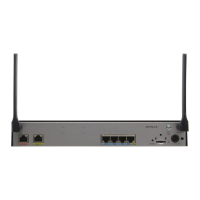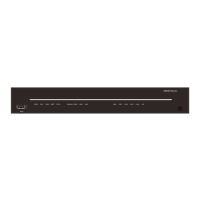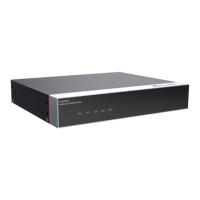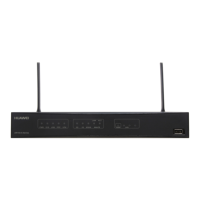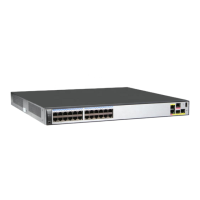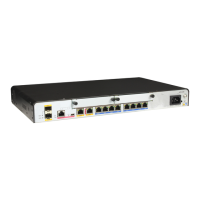3.9.7 Example for Configuring Communication Across a Layer 3
Network Using VLANIF Interfaces
Networking Requirements
As shown in Figure 3-8, RouterA and RouterB connect to Layer 2 networks on VLAN 10.
RouterA and RouterB communicate with each other through an OSPF-enabled Layer 3 network.
The computers on the two Layer 2 networks need to be isolated at Layer 2 and communicate at
Layer 3.
Figure 3-8 Network diagram of communication across a Layer 3 network through VLANIF
interfaces
E
t
h
2
/
0
/
1
Eth2/0/1Eth2/0/2
E
t
h
2
/
0
/
2
VLAN 10
VLAN 10
OSPF
RouterA
RouterB
VLANIF10VLANIF10
10.10.10.2/24 20.20.20.2/24
Configuration Roadmap
The configuration roadmap is as follows:
1. Add interfaces to the VLANs.
2. Assign IP addresses to VLANIF interfaces.
3. Configure basic OSPF functions.
Data Preparation
To complete the configuration, you need the following data:
l Ethernet 2/0/1 of RouterA belongs to VLAN 10, and IP address of VLANIF 10 is
10.10.10.1/24.
l Ethernet 2/0/2 of RouterB belongs to VLAN 10, and IP address of VLANIF 10 is
20.20.20.1/24
l Ethernet 2/0/2 of RouterA belongs to VLAN 30, and IP address of VLANIF 30 is
30.30.30.1/24.
Huawei AR3200 Series Enterprise Routers
Configuration Guide - LAN 3 VLAN Configuration
Issue 02 (2012-03-30) Huawei Proprietary and Confidential
Copyright © Huawei Technologies Co., Ltd.
119

